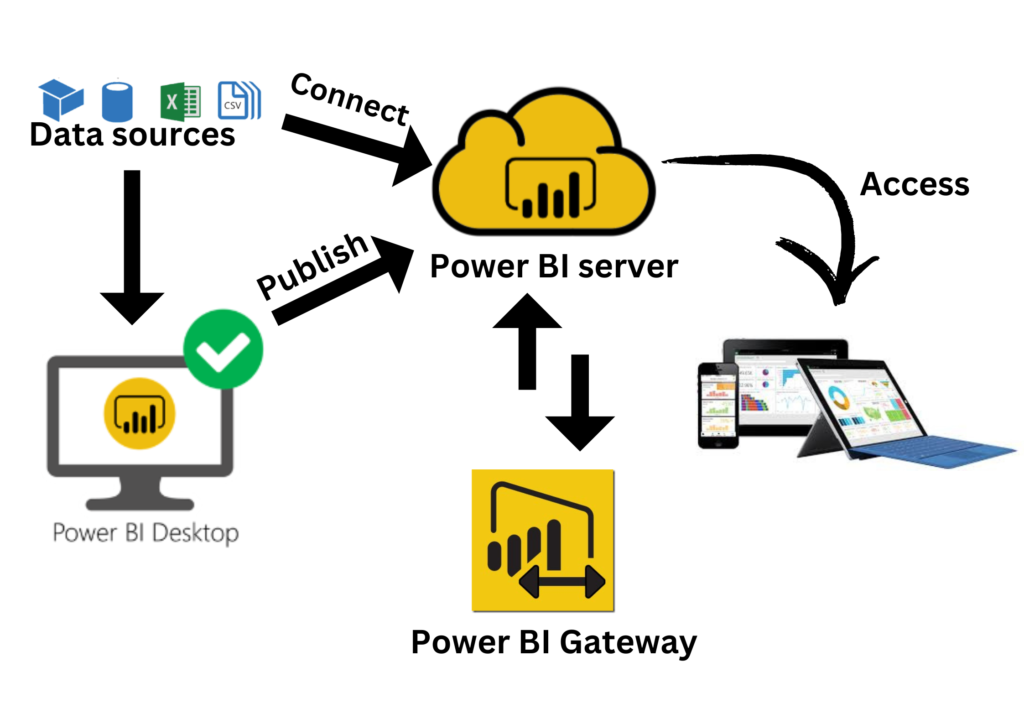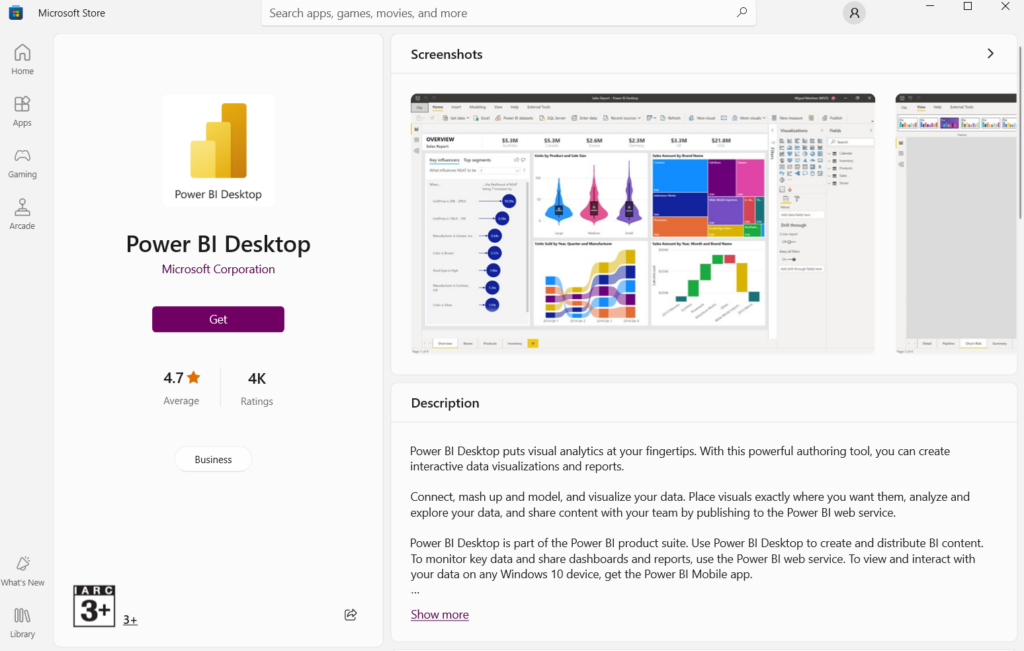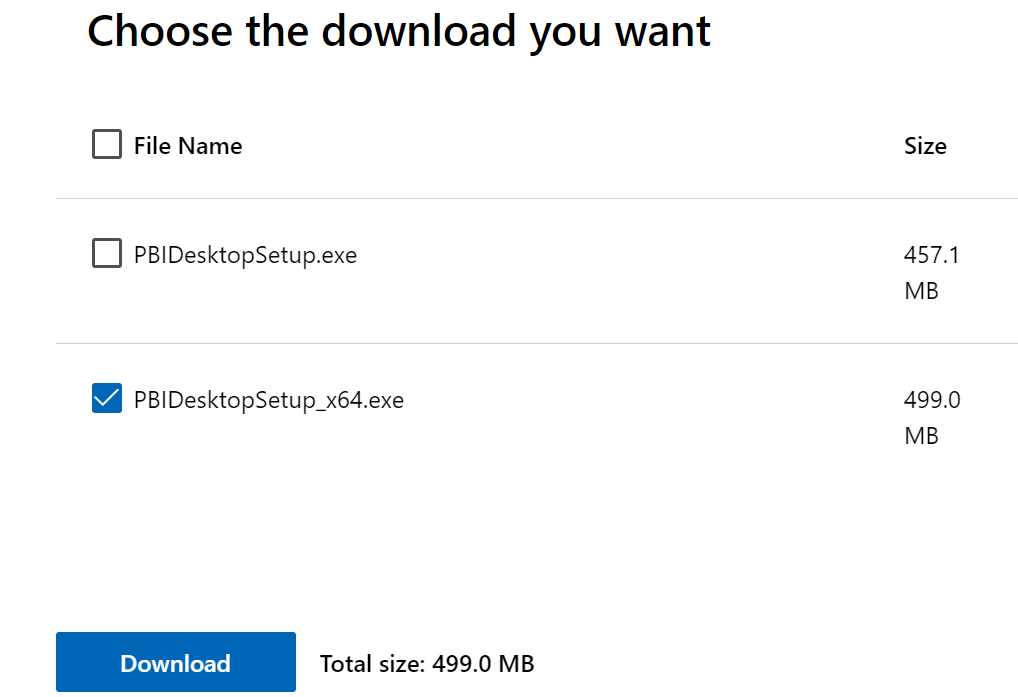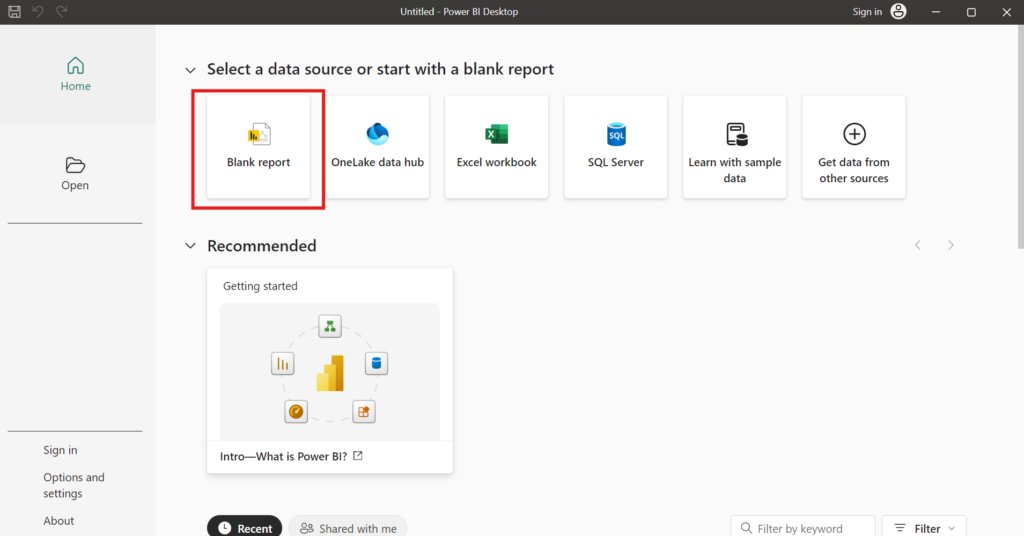Power BI installation is first step to start business analytics with Power BI. Power BI was officially launched by Microsoft in 2015 as a cloud-based business analytics service that enables users to visualize and share insights from their data.
Installation of Power BI Desktop
Power BI is a business analytics tool for data visualization and business intelligence. Power BI is available as free version and enterprise version. Power BI installation process depends on various requirements, version (free version or enterprise version) to install etc. Power BI Desktop is the free version available for individual use and Power BI Report Server is an enterprise version for enterprise-level needs.
Power BI Desktop is a free application that can be downloaded and install on local computer. This can be used to connect, transform, and visualize data on local machine. It enables users to prepare all the necessary reports and visualizations from their data.

System Requirements to install Power BI Desktop
There are hardware or system requirements, which is necessary to ensure installation of Power BI Desktop on local machine. These system requirements are:
- Operating System – 64-bit version, Windows 10 or Windows 11. Power BI Desktop does not support 32-bit operating systems.
- RAM – 4 GB RAM or greater
- Processor – Intel or AMD 64-bit processor, multi-core, at a speed of 1.6 GHz or faster.
- Available Disk Space – Minimum of 2 GB available disk space; more recommended for working with larger data sets.
- Screen Resolution – At least 1280 × 800
- Internet Connectivity – Required for installation, updates, and some functionality that uses external resources.
- .NET Framework – .NET Framework 4.5 or later is typically required
Install Power BI Desktop
Power BI Desktop can be downloaded from Microsoft App Store OR from Power BI Website.
Download and Install Power BI Desktop from Microsoft App Store
- Open the Microsoft App Store on windows machine and search for Power BI Desktop and click on the Get to download.
- We can directly open the Power BI Desktop product page on Microsoft App Store and select Download Free.

Download and Install Power BI Desktop from Microsoft Website

Download Power BI Desktop
- Download Power BI Desktop executable (MSI Installer) from Download Center for 1 person.
- Specify the 64-bit installation file to download.
- After downloading Power BI Desktop from web, we can start its installation process.

Install Power BI Desktop
- Open the downloaded application. Double-click on the
.msior.exefile to start the installation. - Click on the Next button to start the installation process of Power BI Desktop on local machine
- Read the Microsoft Software License Terms. If you agree, select “I accept the terms in the License Agreement” and click “Next.”
- Choose the installation path. Installer will select the default location. Click “Next” to continue.
- Click “Install” to begin the installation.
- This installation can take a few minutes to complete.
- Once it’s done, click on the Finish button to complete the installation.

- After installation of Power BI Desktop is complete, we can launch Power BI Desktop.
- We will see the display screen of Power BI.
- Click on the “Blank Report” to access the Power BI workspace, where we can create models, visuals, and reports, and share them with other members.

Update Power BI Desktop – Microsoft frequently updates Power BI Desktop with new features and improvements. To check for the latest version – Power BI Desktop => “File” menu => “Options and settings” => “options” => “Global” => “Updates” => “Check now”. This will check for the Power BI Desktop updates.
Install Power BI Desktop on Linux
Power BI Desktop is developed for Windows operating system and there are no official version available for Linux. But we can still run Power BI Desktop on a Linux system using a Windows compatibility layer like Wine or by running a Windows virtual machine.
Install Power BI Desktop on Linux Using Wine
- Wine is a compatibility layer that allows to run Windows applications on Linux.
- Update linux system and install Wine on linux. Installation steps of Wine are beyond this article. Please search on the web for Wine installation steps.
- Once Wine is installed and configured, follow the previous steps to download and install Power BI Desktop
Install Power BI Desktop on Linux Using a Virtual Machine
- Download and Install VirtualBox – Install VirtualBox from distribution’s package manager. Download VirtualBox.
- Once VirtualBox is installed and configured, follow the previous steps to download and install Power BI Desktop.
Installation of Power BI Server
Power BI Server (also known as Power BI Report Server) is an on-premises server platform that allows organizations to host, manage, and distribute Power BI reports, paginated reports, KPIs, and Excel workbooks. This installation is generally not required for individuals. This is required by businesses or organizations or larger scale.
Installation of Power BI Report Server is a process that requires setting up the server software and configuring it to host and manage Power BI reports, paginated reports, and other content. Following are the steps to follow to install Power BI Server:
System Requirements
- Operating System – Windows Server 2016, 2019, or 2022, or Windows 10/11 (for development and testing).
- .NET Framework – .NET Framework 4.6.2 or later.
- SQL Server – SQL Server (2016+) with the Reporting Services database installed.
- Hardware – 4+ GB of RAM (8 GB or more recommended)
- Disk space – 20+ GB free space
- Licensing – Appropriate license for Power BI Report Server. Either a Power BI Premium license or SQL Server Enterprise Edition with Software Assurance.
Download Power BI Report Server
- Go to the Power BI Website – official Power BI website.
- From the website, navigate to the “Download” section, and look for “Power BI Report Server” download link.
- Direct link for Power BI Report Server download page.
- Choose the appropriate version (based on your server environment) and download the installer file.
Install Power BI Report Server
- Run the Installer – Locate the Report Server downloaded
.exeinstaller file and start the installation process. - Installer can prompt to choose between “Install Power BI Report Server” and “Install Power BI Desktop.” Choose “Install Power BI Report Server.”
- Choose between a free trial or licensed version with product key.
- Choose the installation path or use the default location. Click “Next” to continue.
- Install the Report Server – Click “Install” to begin the installation. This may take a few minutes.
- Once the installation is complete, you will see a screen with an option to configure the report server. Leave this checked and click “Finish.”
Configure Power BI Report Server
- After installation, open the Configuration Manager from the Start menu.
- In the Configuration Manager, select the server instance to configure and click “Connect.”
- Configure the Web Service URL – select “Web Service URL”. Choose the default settings or specify the virtual directory and IP addresses as needed. Click “Apply” to set up the web service.
- Configure the Report Server Database – From the database, select to change database and create a new report server database. Specify the SQL Server instance and database name.
- Configure the Web Portal URL – From the menu select “Web Portal URL”. Set up the virtual directory and other settings as needed. Click “Apply” to create the portal URL.
Test and Deploy Reports
- Open a web browser and navigate to the Web Portal URL configured earlier
- From the web portal, we can upload Power BI reports, paginated reports, KPIs, and other content.
- Open the uploaded reports to ensure they render correctly in the web portal.
Summary
In this article, we learned about installation steps for Power BI Desktop and Power BI Report Server. Following sections were explored:
